I love temples. They are always a little different but somehow similar. I had done some investigating on the “Things you don’t want to miss in Delhi” and I came across this temple. When I asked my guide, you know Navin by now, he had not heard of it, but found it for me and I am glad he did. It was special!
Kali Temple
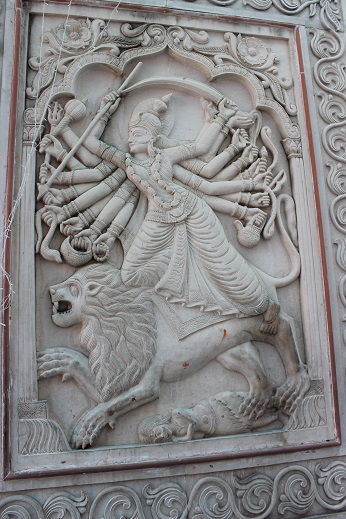
This is the entrance to Kalkaji Mandir.
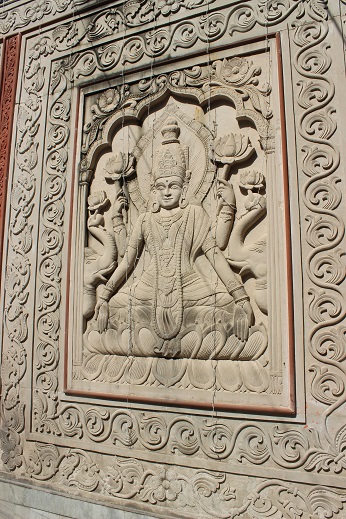
I really didn’t know much about this temple other than it had ties to the Pandavas. (Bhagvad Gita)
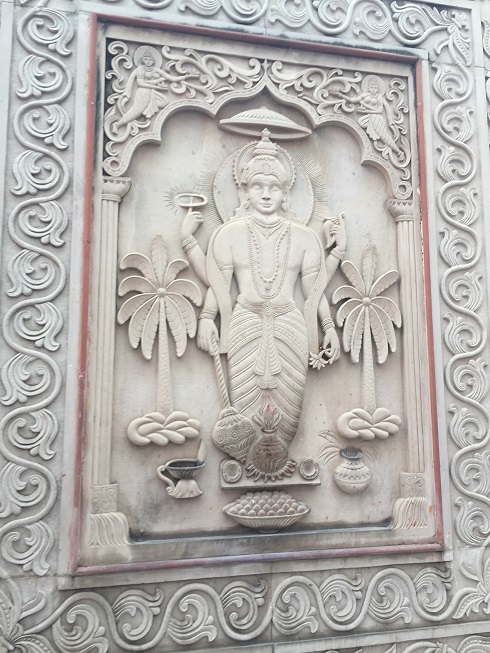
We walked down this really narrow street and saw these beautful carvings on marble on what we thought was the outside of the temple.
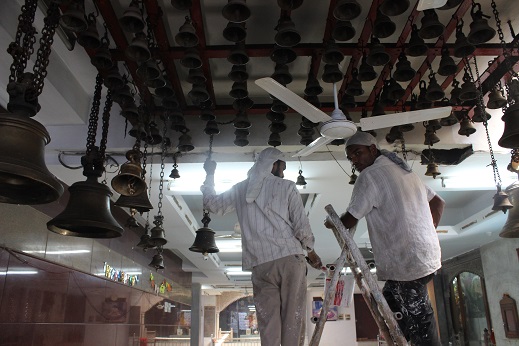
Kalkaji Mandir is amongst the oldest and the most revered temples of India. The temple is dedicated to the goddess Kalka or Kali, an incarnation of Durga. It is also called ‘Jayanti Peetha’ or ‘Manokamna Siddha Peetha’. ‘Manokamna’ literally means desire, ‘Siddha’ means fulfillment, and ‘Peetha’ means shrine. So, it is believed to be the holy shrine where one gets the blessings of Maa Kalika Devi (Goddess or Mother Kalika) for the fulfillment of one’s desires.
Before entering the temple and receiving the blessing, you ring bells. These guys in the picture above were cleaning the bells outside the temple entrance. They were nice enough to let me take their picture.

Devotees attend the Kalkaji temple throughout the year, but the culmination point of their prayers and celebration comes during the festival of Navratri twice a year. This is a nine-day Hindu festival, in Spring and Autumn during which a large fair is organized. Devotees gather and sing various hymns and songs praising the Goddess Durga.
To enter the temple itself you pass through this doorway, flanked by two beautiful siver doors depicting ganesha.
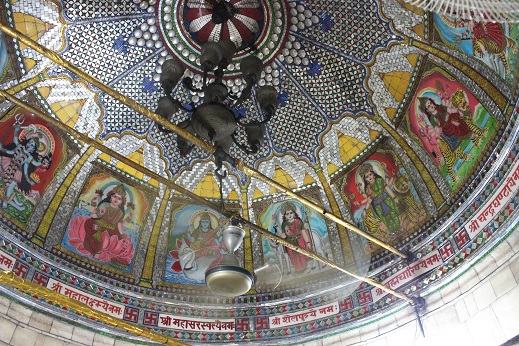
The first thing you notice is the ceiling. It was magnificent with stained glass pictures of the Goddesses.
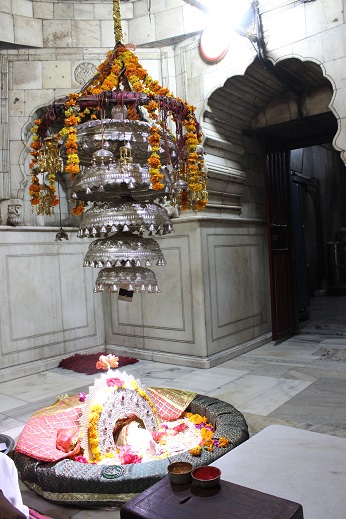
The alter itself was small and the priest sat by the side. Only speaking Hindi, our guide had to interpret his message to us. He then blessed us and we left our offering. It was such a sweet experience.

Upon leaving we see there is an additional alter outside the door to the central alter.
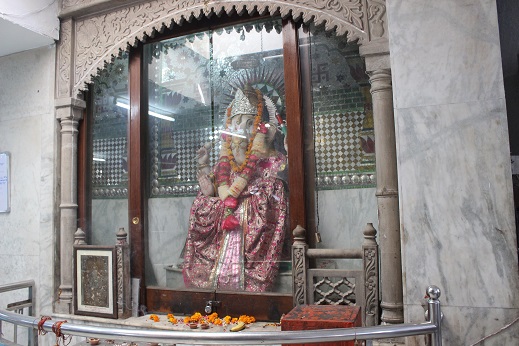
Located around the perimeter were these lovely murtis of Ganesha,
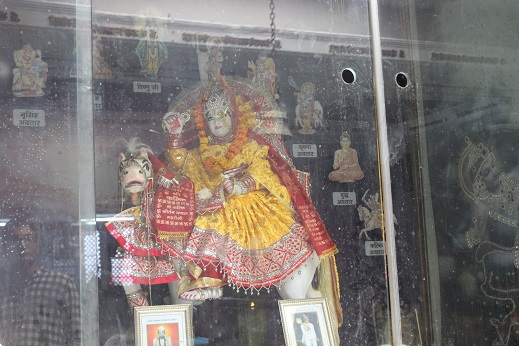
And manifestations of Vishnu. These were both behind glass and so the pictures aren’t the best. I am so glad we spent some time here, probably among the list of my favorite things I did on this trip.
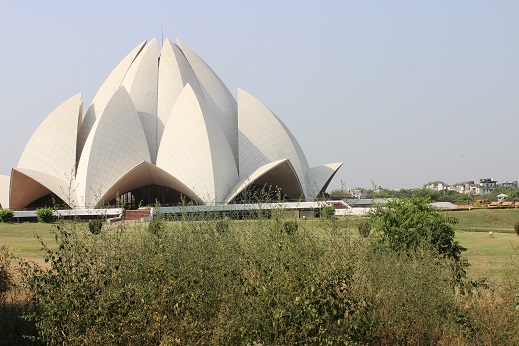
Next we were off to the The Lotus Temple. The Lotus is Bahá’í House of Worship that was completed in 1986.
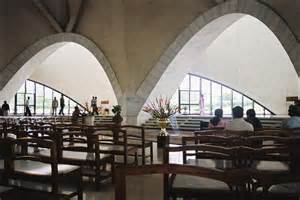
The Bahá’í Faith is a monotheistic religion which emphasizes the spiritual unity of all humankind. Three core principles establish a basis for Bahá’í teachings and doctrine: the unity of God, that there is only one God who is the source of all creation; the unity of religion, that all major religions have the same spiritual source and come from the same God; and the unity of humanity, that all humans have been created equal, coupled with the unity in diversity, that diversity of race and culture are seen as worthy of appreciation and acceptance. According to the Bahá’í Faith’s teachings, the human purpose is to learn to know and to love God through such methods as prayer, reflection and being of service to humanity. (Wikipedia)
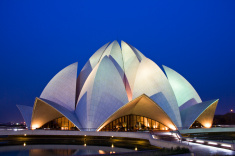
Notable for its flowerlike shape, it serves as the Mother Temple of the Indian subcontinent and has become a prominent attraction in the city. The Lotus Temple has won numerous architectural awards and been featured in hundreds of newspaper and magazine articles.
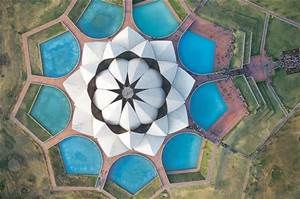
Like all other Bahá’í Houses of Worship, the Lotus Temple is open to all, regardless of religion, or any other distinction, as emphasized in Bahá’í texts. The Bahá’í laws emphasize that the spirit of the House of Worship be that it is a gathering place where people of all religions may worship God without denominational restrictions. The Bahá’í laws also stipulate that only the holy scriptures of the Bahá’í Faith and other religions can be read or chanted inside in any language; while readings and prayers can be set to music by choirs, no musical instruments can be played inside. Furthermore no sermons can be delivered, and there can be no ritualistic ceremonies practised.
Thanks for reading and sharing, our next stop in Humayun’s Tomb and a quick history of Mughal rulers just to keep things straight. Peggy
